The Article
VERTEX AQ STAGE 1 SYSTEM: The first step on your journey
2nd August 2015
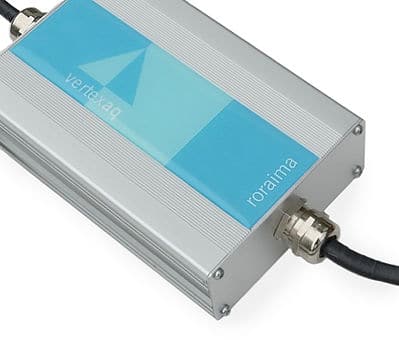
Promising to eradicate your Hi-Fi’s RFI, EMI and acoustic transmission problems, Paul Rigby reviews the Vertex AQ system
If you take a look at the images around this feature, you’ll be thinking that I’m about to review a bunch of cables. Wrong.
Vertex AQ is not in the business of building spanking new cables with all the frills and new materials offered by the likes of Atlas, Nordost, Tellurium Q, Chord et al.
Vertex AQ make decent cables but nothing more than that. The point of these cables and the point of this review are the boxes attached to them. Put very simply, the blocks aim to remove unwanted noise and distortion from your hi-fi, improving overall sound quality.
“In the block,” said Steve Elford, CEO of Vertex AQ, “is an acoustic absorption labyrinth. One of the things this block tackles is acoustic transmission. The latter will go up and down anything that it’s already in. So this nasty stuff will be in your mains conductors, the mains transformers and even things around the house on the mains. The metal of the wiring, for example, is the prime conductor of the vibration. That vibration will be positioned right up into the ultra-sonics. Instead of trying to isolate things in the cable, in that block we impedance match a connection to the conductors. That gives an alternate vibration path into a labyrinth which is a complex structure of very hard material which breaks down the vibrations by destructive interference.”
Confused? OK, put it this way. If you have a stethoscope, stick the ear pieces in your ears, pick up any ordinary hi-fi interconnect lead and put the stethoscope pad on one end of that cable. Scrape the other end of the cable and you will hear the resultant noise very loudly. According to Elford, on a Vertex cable you won’t hear anything, even though the conductor is continuous from one end to the other.
Put another way, it’s a bit like having a gearbox that’s working badly. Put a tip of a screw driver on the gearbox and the bone of your cheek onto the screwdriver handle you can hear all of the whining of the gears inside the gearbox. Because you’ve got bone against the metal against the gearbox casing. Hard materials are the key here.
“It’s the same principle as a support platform,” said Elford. In that, you have the chassis of a CD player, a coupling device such as support cones and inside the platform some sort of vibration absorption. The coupler creates the route and any vibration that’s hanging around the CD player now sees a way outwards through the coupler into the platform because it’s another low impedance route. It’ll follow that route.
“Hence, that CD player on a platform with the coupler is exactly the same as the cables we have here with the box attached. We know that we can plug wires into the back of a CD player: the mains, interconnect, etc. That wire goes directly into the circuit. With a Vertex lead, we are taking that wire in the circuit and putting the labyrinth directly on the wire instead of a labyrinth on a platform.
“When you start to put more Vertex cables in the system you begin to systematically lower the acoustic noise floor. It’s dynamic, not random. You are providing a host of drain points. Draining the acoustic energy from the power supplies and grounds too. That’s the major strategy.”
Elford has a problem with cable manufacturers. He believes that all they do is concentrate upon getting the signal from A-B more efficiently, they don’t think about the distortion that they are carrying. In fact, he says, the better the signal carrying ability, often the worse the distortion because that signal is carrying more signal, faster, hence it’s carrying more distortion, faster.
Put in more practical terms, Vertex AQ believe that as you increase RFI into your hi-fi, the sound will become harsh, bright and forward. This, says Elford, is why silver cables are often accused of bring ‘bright’ and ‘harsh’. Not because silver is any worse as a performer than copper. Quite the opposite, silver is much better. But it’s also more efficient at moving distortion from A-B too. Want to make the most of silver cables? Get rid of the sonic rubbish it carries.
What Vertex AQ are working towards is to improve the timing of your sonic signal within the circuits of your main components. The company says that what most of us have coming out of your hi-fi, is a bit of a mush. Often, it’s a very nice mush that you are happy to live with but it’s still mush, “Basically, your pure signal (your guitar strum or drum beat) travels through your hi-fi and out of your speakers and picks up distortive affects along the way. Your pure song signal combines with these distortive effects to produce mush. Worse, this combination often produces third party, additional signals that sit just above and just below your signal. Your ear hears all of this stuff in one go. Remove the rubbish and your music sounds crisper, more transparent, offers great clarity and better timing,” said Elford.
In parallel with that, Vertex AQ want to tackle additional problems with RFI (Radio Frequency Interference) and EMI (Electro-Magnetic Interference). RFI is found within each conductor and EMI is airborne radiated. Each are interchangeable. The wire acting like an aerial for this stuff, transmitting and receiving, “We consider that as damaging to a hi-fi system. We want to drain it or cancel it,” said Elford.
One of the tools Vertex AQ offer to combat that is the Jaya Filter. The Jaya is a ‘shunt filter’ (there is one in the Taga, the distribution block, too). Both filters sit in parallel. They share out the noise between live, neutral and earth, “Rather than leaving one line very noisy. If you share it you don’t add impedance to the power into the system but the noise cancels through common mode noise rejection. With a Jaya, you don’t ‘hear’ the device. You are hearing the way the mains network has changed its RF characteristics. The Jaya doesn’t do anything to the system. There’s a little bit of acoustic draining too because it’s also on a labyrinth. The Silver Jaya, also a shunt, uses more silver within, speeding up the shunt filter and it features more elements to the circuit moving up to a higher frequency.”
The Taga distribution block has two modules inside it. One is an in-line acoustic absorption module – very similar to those fitted on the Roraima cables. It also has a shunting Silver Jaya in the block. You can then experiment with cascade filtering, “When you put the Taga in, it will shunt RFI noise to get rid of it. You can then add other Jayas into other sockets around the system or even in different wall sockets around the room (which might be on the same ring main). More than one filter used increases effectiveness. This is why we are suspicious of products that hail themselves as a total filtering solution. The problem is that it’s all over the network. You are pulling the noise floor down at Point A, Point B and Point C. It’s a good think to experiment with filters in different sockets. One combination will be better than another.”
Armed with a selection of Roraimas, Jayas and a Taga, I added each box, one at a time, listened to the new system, noted any sound changes and added another until everything was plugged in and then took a view from that point. When everything is connected, Vertex AQ consider that you have added Stage 1 of the mission to remove these distortive factors from your hi-fi. Of course, Stage 1 implies that there is more to do and there is. Depending on your budget, you can upgrade to more effective system or stick with what your got. For now, let’s see how Stage 1 performs.
SOUND QUALITY
To begin, I hooked up my hi-fi to a basic power block that you can find in any High St electrical shop. One of those 6-socket jobs. Using a Columbia Deep Groove, 6-eye, pressing of the original film soundtrack, Say One For Me featuring vocals from Bing Crosby and, scarily, the actor Robert Wagner, I plugged a single Jaya in and compared the before and after effect of the Jaya on its own.
The effect was definite and intriguing. Intriguing because the basic sound quality seemed to remain largely unchanged. That is, the dynamic range, the bass extension, the treble response and more were left untouched. What was altered was an obvious change in the distortion which was drastically reduced meaning that brass crescendos no longer verged on the screechy. Trumpets could be rather strident while trombones and saxes were originally a touch bright. Those effects were now gone and a greater sense of focus was evident. Vocals, in addition, wandered less aimlessly around the soundstage. In addition to being fixed in position, they were also less wishy-washy, to coin a Charlie Brown-ism.
Moving right along, I plugged two Roraima power cables into the rear of my monoblocks. Again, the change was immediate and definite. In this case, during the orchestral introduction, the music was smoother and more open in nature. Yes, there were still a few upper midrange artefacts causing elements of stridency (the result of the opening up of the top end, no doubt) but you could hear the effort being made.
Similarly, vocals now performed in a larger space, a wider soundstage gave the vocal performances a greater presence, allowing each to relax. The vocals now had more air and space in their delivery. Again, because there was more going on, there was more information in the offing and a greater chance of unruly frequencies escaping. Nevertheless, the music now had an impressive feel. Bass offered more punch and pace. The light jazz arrangement offered genuine swing. For the first time my feet felt like tapping.
Turning to dynamic prog rock and Porcupine Tree’s track Disappear, adding the Jaya changed the physical construction of the soundstage. Firstly, the stereo image became more secure and fixed in the centre of the soundstage. Previously, the sound image wandered and was foggy in its lack of precision. In fact, at that initial stage, it almost sounded like the soundstage shifted to the right by a foot. For the first time, I had a better response from the right channel. In addition, the Jaya increased the depth of the soundstage. In between the speakers, there was an obvious distance moving backwards, behind the speaker line, adding a 3D effect.
Adding the Roraima power cables to the mono blocks, there was a tremendous decrease in noise that allowed a variety of extra detail to peep through. Firstly, the quiet acoustic portion of the early part of the song now exhibited a definite ring from the body of the guitar while the big, dynamic, bass-heavy climax at the latter parts of the song sounded far smoother than before, allowing lots of extra percussive and guitar details to emerge from the mix. The masking effect of the bass bloom had receded while the vocal delivery was now more airy and emotive.
The next step was to add Roraimas to both my pre-amp and the phono amp. Playing the vinyl version of Bobby Darin’s Venice Blue, the basic set-up produced a rather recessed midrange and a Darin vocal that was compressed in its scope. Adding the Roraima to the Pre opened up the sound, adding more incisive detail to the mids, giving the strings more space to sweep and roam and adding an essential freedom that brought air onto the soundstage. The addition of the new cable also relieved the Darin delivery of a degree of tension. Now able to relax, Darin’s voice broadened and expanded while more detail was forthcoming from the mids. The guitar was now obviously part of the mix and the bass was, for the first time, noticeable with rhythmic presence.
Changing to a high tempo track and The Who’s Baba O’Riley on CD, adding the Roraina saw an immediate stretching of the soundstage which was immediately occupied by Keith Moon’s drums. His treble-induced cymbals were also spread over the soundstage, providing more air and space while Pete Townshend’s brief vocal insert was multi-layered rather than the insipid delivery he previously exhibited. Similarly, Roger Daltery’s lead vocal offered greater nuance and emotion while the guitar gloated over the central portion of the soundstage instead of being grounded and rather lazy.
Now it was time to add the Silver Plus Jaya with a slice of Dexter Gordon on CD and I Was Doing All Right. Putting the Silver Plus into the hi-fi chain, initially, produced slightly unexpected results. A rather eerie silence descended over the first few bars of the song but as the sax and then trumpet came into play, I quickly realised that what I was hearing or, rather, not hearing was a whole batch of noise. This stripping away of a heap of distortion gave the individual instruments a much smoother presentation. Because this intrusive noise was now removed, it also allowed previously suppressed detail to be detected by the ear. The entire track now swung with an easy rhythm.
Returning to Bobby Darin on vinyl, the effect on this higher resolution audio format was even greater as the introductory strings had an incredibly clean presentation at the very top of this track. That was followed by an insistent cymbal strike that now sounded crisp and solid. Darin’s vocal delivery was fuller and more demanding while the clarity of the upper mids was highlighted by the distinct guitar strums. The electric bass guitar now had a greater power potential as the single string plucks offered bounce and energy.
The final addition to this initial Vertex AQ picture was to insert the Taga power block into the hi-fi chain. Doing so was revealing. In so much as the vocal and instruments sounded a lot more ‘natural’. There wasn’t ‘more’ of anything in particular. In fact, ‘less’. Again, less distortion and noise to get in the way of the fact that Darin sounded natural in his delivery. That strummed guitar sounded more guitar-like and the drums had a very much more natural thump and texture to each strike. In short, the clarity and transparency of the music was now hitting a new level.
With the Dexter Gordon CD, the removal of distortion was so extreme that the volume was actually lowered upon initial play, demanding an increase in gain to maintain previous volume levels. Don’t forget, the introduction of noise and distortion, adds harmful frequencies to any piece of music. Your ears natural reject this noise and so cannot take it at high volumes. Remove the noise and the ears want more. Adding gain provided new levels of detail and information from all instruments. The sax added a definite ‘reedy’ feel to its presentation, piano was now more involved while the drum cymbals and rim shots provided atmosphere. The trumpet, especially, offered a new dimension in its delivery, performing in a larger, more reverb-laden space.
CONCLUSION
With each and every additional Vertex AQ component, the sound quality improved measurably. That is, the difference was immediate and could be noticed within the first couple of seconds of play whether that be via a CD or vinyl source. The most important area of improvement was in the steady removal of noise and distortion so that, unlike some demonstrations of CD players, turntables, phono amps or whatever, when you say, ‘Oh, I can hear more bass, that rim shot is crisper, there’s more energy to that guitar solo…’ that never really happened with the Vertex AQ. Instead, you got to feel that noise and disposition was slowly being stripped away, layer upon layer from music that was already there. The natural detail and information, you feel, was always present, waiting to be discovered and that’s what, indeed, happened over the entire review. It was an odd feeling and, because of that, quite a unique review.
There is a point to address regarding price. Firstly, some people with larger budgets won’t see an issue with the price for this suite of components at all. Others will see a problem but the sonic improvements gained from this suite were commensurate with a major component upgrade so the total price of around £3,000-£3,500, acting as ‘one’, were a bargain. Thirdly, of course, you don’t have to buy the entire suite in one go. You can build slowly, buying one box at a time, improving the sound as you go.
Vertex AQ tell me that this is merely a ‘Stage 1’ in their entire system. I, for one, am hungry for more. I want to hear what else is hiding in those metal boxes of mine. Roll on Stage 2!
RORAIMA MAINS LEADS
1.0m £394.87
1.5m £427.98
STANDARD JAYA MAINS FILTER – £401.06
SILVER PLUS JAYA – £644.33
STANDARD TAGA – £1,046.57
THE VERTEX AQ SYSTEM STAGE 1
VERTEX AQ
Tel: 01554 759267
Website: vertexaq.com
Facebook: www.facebook.com/vertexaq
Good: lower noise floor, clarity, transparency & a re-built soundstage
Bad: Price (with reservations as noted in the above conclusion)
RATING: 8
REFERENCE SYSTEM
Origin Sovereign Turntable
12” Enterprise arm
Miyajima Zero cartridge
Icon Audio CD-X1 CD player
Aesthetix Calypso Pre
Icon Audio MB845 Mk.II monoblocks
Quad ESL-57 speakers with One Thing upgrade

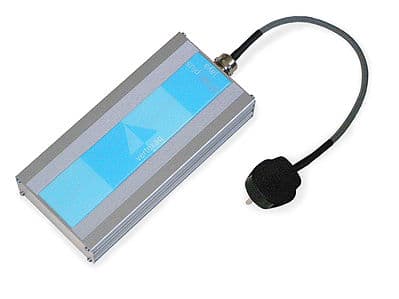
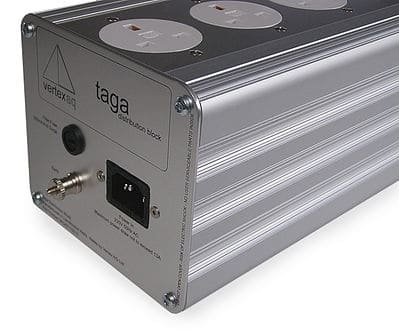
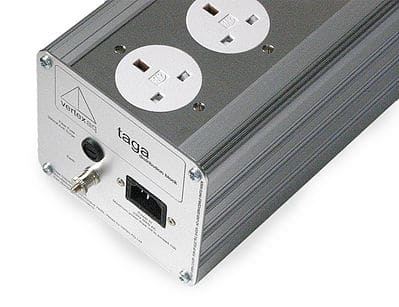
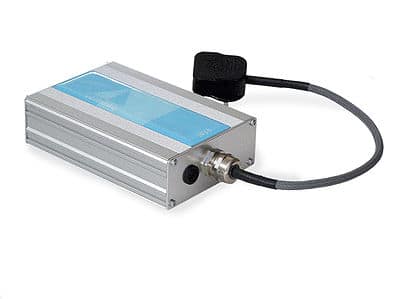
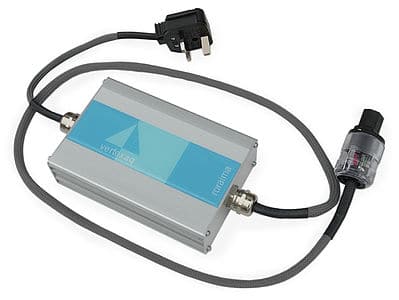

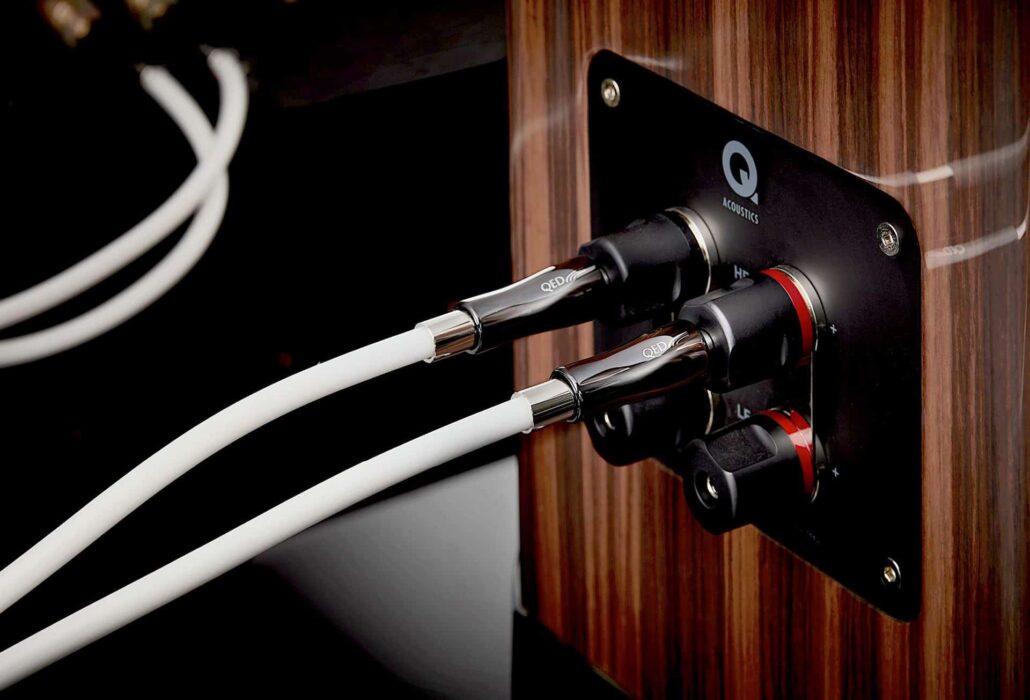
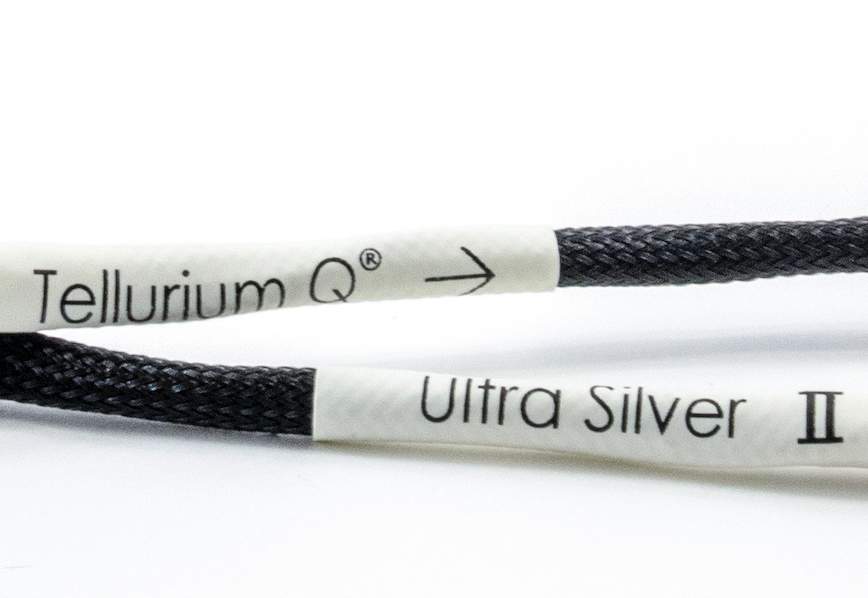
[…] CD Player Aesthetix Calypso pre-amp Icon Audio MB845 Mk.II monoblock amplifiers Spendor A1 speakers Vertex AQ & Tellurium Q […]